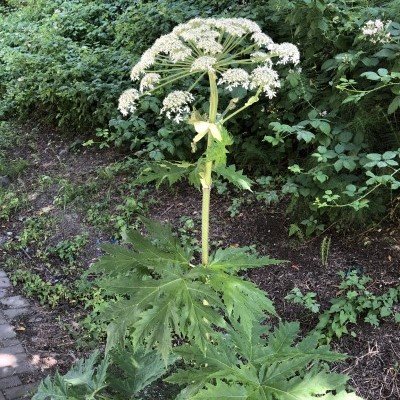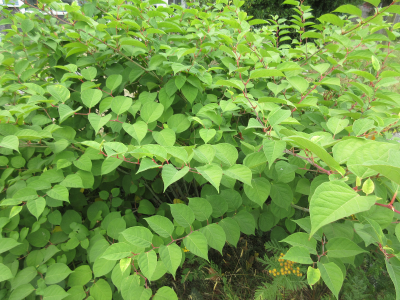
Invasive Plants
Find out about invasive plants in Surrey and alternatives for your garden.
Invasive plants have negative impacts on our urban forest. In their natural habitat, they have natural predators and competitors that keeps them under control. However, in new places with no natural controls, they escape gardens, outcompete native plants and take over natural areas.
Invasive plants are usually beautiful, and grow quickly and easily, making them a desirable plant for your garden.
But don’t let these sneaky plants fool you—they cause serious harm.
Play Your Part
Choose native plants
Check out the Grow Me Instead guide to find native and non-invasive exotic plant alternatives to common invasive plants.
Play, clean, go
Take the time to inspect your boots, clothes, gear and even pets before exploring the outdoors. Invasive plants may catch a ride with you to their next location.
Many invasive plants are even good at spreading their own seeds. For example, Policeman's Helmet can fling its seeds up to 7 metres (23 feet)!
Properly dispose of yard waste
Place yard waste like garden clippings and hanging baskets in your organics cart for curbside pickup. Dumping yard waste in parks and natural areas can spread invasive plants, and it's against the law.
Invasive plants also creeps into natural areas from other properties, growing over, under and even through anything in their path. English Ivy can spread up to 4.5 metres (14 feet) in one year.
Report sightings
Familiarize yourself with common invasive plants in B.C, be on the lookout and report any suspected sightings.
Improve your awareness, detection and control of invasive species in our region by taking Metro Vancouver's one-hour, online introductory course.
Volunteer
Volunteer with us to remove invasive plants, like Himalayan blackberry, in your local parks.
Report High-Priority Invasive Plants
Report these invasive plants if you see them along City of Surrey roads, boulevards, ditches and in park land. Call our service request line at 604-501-5050.
Giant hogweed
Do not touch this plant. Its sap and stem hairs can cause serious burns, blisters and scarring.
Giant hogweed is a tall perennial plant that grows up to five metres tall. It has large clusters of white flowers in an umbrella-shaped head up to 60 centimetres wide.
Japanese knotweed
This invasive plant can grow through cracks of concrete and damage your property.
Japanese knotweed is a large bamboo-like, perennial shrub that grows up to five metres tall. It can grow up to eight centimetres in one day.
Negative Impacts
Invasive plants have lasting economic, social and environmental impacts:
- Lower habitat value for local wildlife as the native plants they depend on for food and shelter are outcompeted by invasive ones.
- Change landscapes. When invasive plants take over, natural areas may not function well. Invasive plants may reduce shade and shelter, weaken soil stability, and alter the movements of wind and water.
- Increased exotic pests and plant diseases, like black garden slugs.
- Increased cost to the City to restore parks affected by invasive plants.
- Reduced recreational value. Invasive plants reduce the natural beauty and decrease the variety of plants and animals.
- Reduced crop yield by an estimated $50 million annually in B.C.
"Exotic" Plants are not Invasive
There are some garden plants that aren’t native to the area, but don’t cause harm to the natural habitat—these are called non-native or "exotic" plants. Find out if a plant is invasive in B.C.
- Native plants: a species that originates from and evolves with its surrounding habitat and has adapted to living in that ecosystem.
- Invasive plants: a species that outcompetes native species and harms the environment, economy, and/or society, including human health (e.g., giant hogweed).
- Non-native plants: an introduced species that originates from somewhere other than its current habitat, and generally does not cause harm. Non-native species are sometimes referred to as “exotic”.

